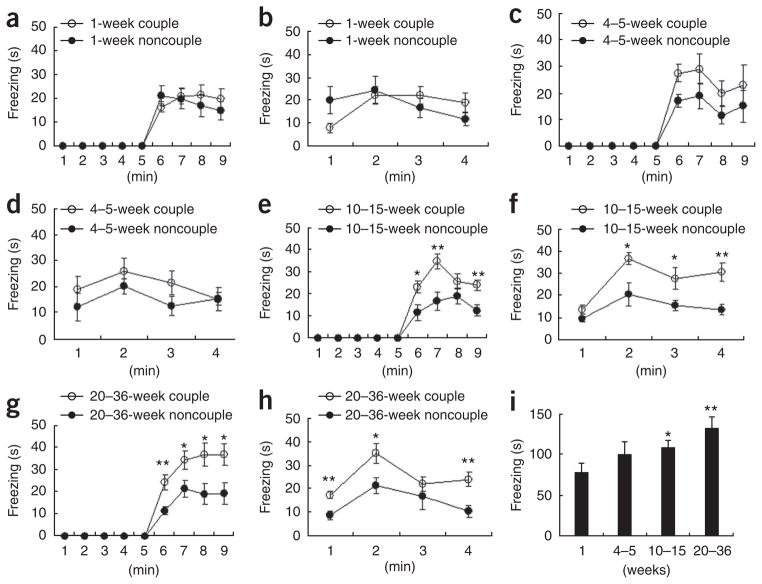Figure 2.
Observational fear learning with female mating partners as demonstrators: effect of the duration of co-housing period (familiarity). (a,b) Observational fear conditioning after 1 week of co-housing (couple, n = 10; noncouple, n = 10). There was no difference in the observational fear response (a) and the 24-h contextual memory (b) between couple and noncouple experiments. (c,d) Observational fear conditioning after a 4–5-week co-housing period (couple, n = 6; noncouple, n = 9). There was no difference in the observational training (c) and the 24-h contextual memory (d) between couple and noncouple experiments. (e,f) Observational fear conditioning after 10–15 weeks of co-housing (couple, n = 12; noncouple, n = 7). There were significant differences in the observational training (F1,17 = 11.41, P = 0.0036, two-way repeated ANOVA, e) and the 24-h contextual memory (F1,17 = 11.77, P = 0.0032, two-way repeated ANOVA, f) between couple and noncouple experiments. (g,h) Observational fear conditioning after 20–36 weeks of co-housing (couple, n = 9; noncouple, n = 7). There were significant differences in the observational training (F1,14 = 8.62, P = 0.0109, two-way repeated ANOVA, g) and the 24-h contextual memory (F1,14 = 17.21, P = 0.001, two-way repeated ANOVA, h) between couple and noncouple experiments. (i) The strength of the fear response was increased with as the duration of the co-housing periods increased. ANOVA (F3,33 = 3.38, P = 0.029) of the total freezing time revealed a graded effect of the duration of co-housing period on the development of observational fear and there was a significant difference in total freezing time between 1-week co-housing period group and 10–15-week or 20–36-week groups. *P < 0.05, **P < 0.01, Scheffe’s post hoc test. Error bars represent s.e.m.

